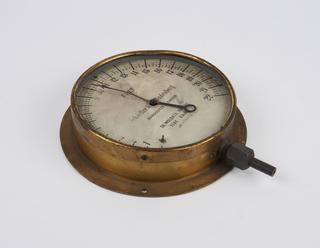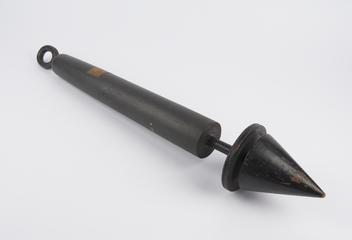
Miller-Casella thermometer for taking temperatures at depth at sea

Miller-Casella thermometer for taking temperatures at depth at sea, designed by chemist William Allen Miller in 1869 and made by Casella, London, about 1872. This thermometer design is a modification of a maximum and minimum thermometer designed by James Six in 1780, adapted for use at pressure in the deep sea. The plastic body surrounding the thermometer tube is a later addition.
Surveyors and navigators struggled to obtain accurate temperature readings from the deep sea because the pressure at depth rendered inaccurate the readings from conventional mercury thermometers.
This thermometer had a simple U-shape and its bulb was continuous with the tube. A smaller bulb on the opposite limb held the vapour whose elasticity returned the fluids as the temperature fell. The bulb was surrounded by a glass sheath, while the intervening space was filled with alcohol, its vapour and some air. Since the level of mercury and the indexes could not be seen against the dark ebonite mount, the tube was backed with white glass and rhe scales engraved on slips of white glass fastened beside the tube. Small bulges or aneurisms at the ends of each limb prevented the indexes being carried into the bulbs or down into the U-bend.
Details
- Category:
- Oceanography
- Object Number:
- 1876-820/1
- Materials:
- mercury, glass and steel (metal)
- type:
- thermometer and mercury
- credit:
- Admiralty Hydrographic Department




